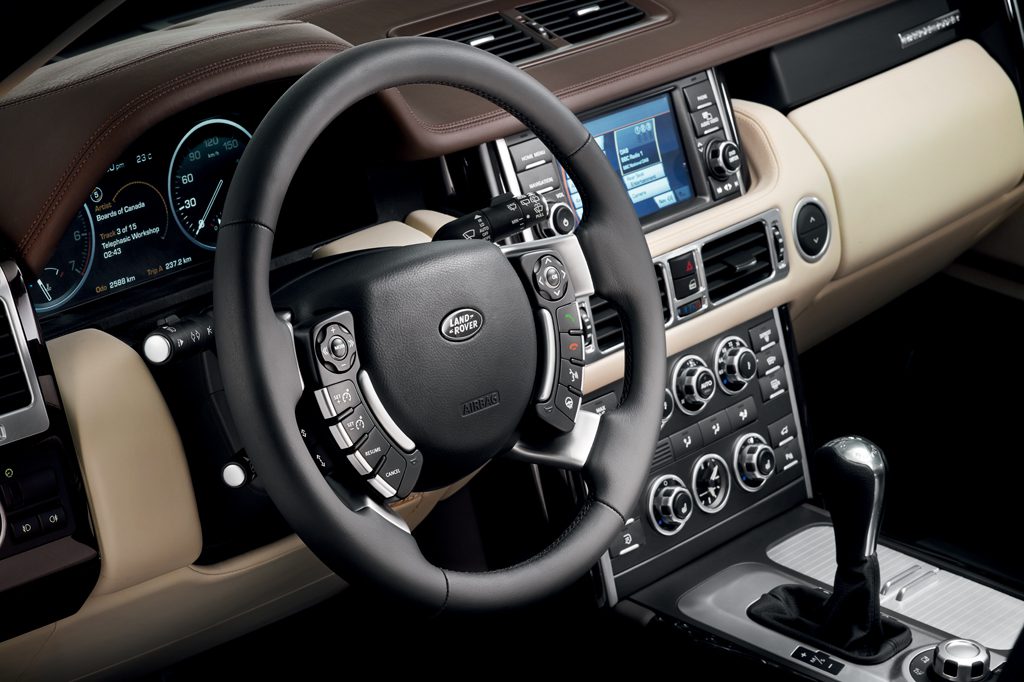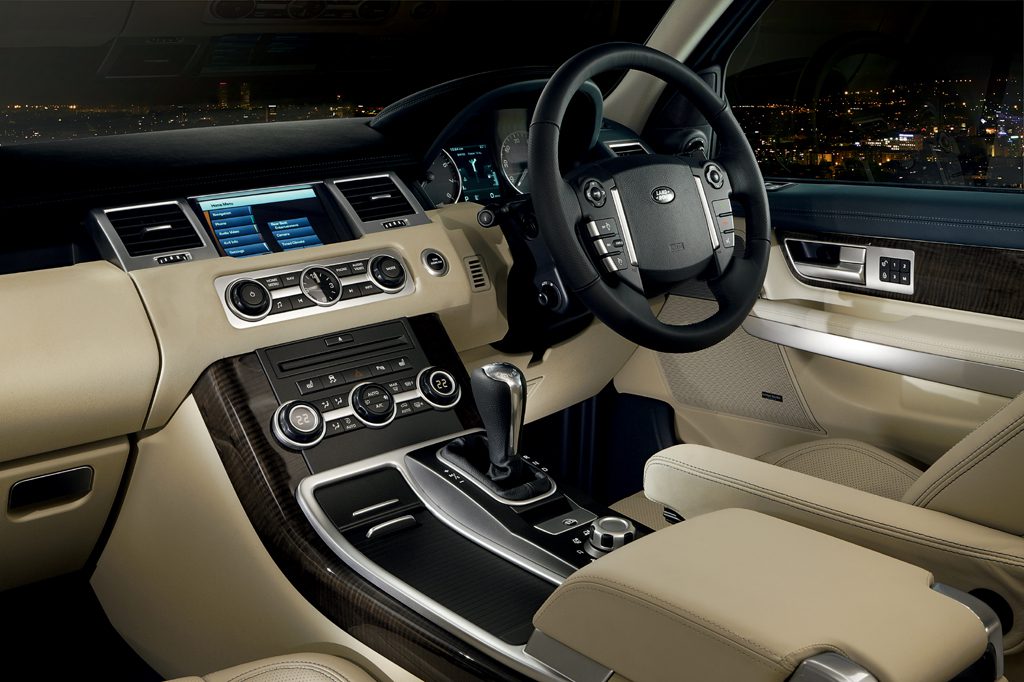| Premium midsize SUV; Built in England |
|
|
| Good condition price range: $24,400 – $64,600* |

2010 Land Rover Range Rover Sport front

2010 Land Rover Range Rover Sport rear

2010 Land Rover Range Rover Sport interior
| Pros: |
|
| Cons: |
|
In its base HSE form, Range Rover Sport isn’t as aggressively sporty as some comparably priced high-performance SUVs. Supercharged models raise the performance bar significantly, but at a stiff price premium over the HSE. The Supercharged edition may not match some rivals’ overt machismo tone, but few competitors are as refined or easy to drive. Any Range Rover Sport does a very good job balancing on- and off-road performance with comfort and utility, all while maintaining a mature and distinct personality.
Overview
For the 2010 model year, Land Rover’s Range Rover Sport earned freshened styling, newly available features, and new engines. Seating five, this premium-midsize SUV shared some of its basic design with Land Rover’s seven-passenger LR4. Range Rover Sport came as the HSE with a 375-horsepower 5.0-liter V8 engine, replacing a 300-horsepower 4.4-liter V8. The top-end Supercharged model held a 510-horsepower 5.0-liter V8, which replaced a 390-horsepower 4.2-liter V8. A six-speed automatic was the sole transmission. All-wheel drive with low-range gearing was standard. It included Land Rover’s Terrain Response system, which automatically tailored AWD performance to specific off-road conditions. A locking rear differential was optional.
Standard safety features included antilock braking, traction control, an antiskid system with rollover sensing, front-side airbags, and curtain-side airbags. Hill descent control was standard. So were a sunroof, dual-zone climate control, front- and rear-obstacle detection, and a navigation system. An adaptive air suspension also was standard. Among the new features offered were keyless entry/engine start as well as a “Surround Camera” system that showed the driver nearly the entire circumference of the exterior on the screen of the standard navigation system. The available LUX package for HSE models included heated front and rear seats, a heated steering wheel, adjustable side bolsters on the driver’s seat, a cooler box in the center console, upgraded leather upholstery, wood interior trim, adaptive headlights, and 20-inch alloy wheels. A limited-edition Autobiography model could be specified. Premium-midsize SUV rivals included the BMW X5, Mercedes-Benz M-Class, and Volkswagen Touareg.
Yearly Updates
| 2011 Range Rover Sport Following its freshening for 2010, the Range Rover Sport had few changes for 2011. |
| 2012 Range Rover Sport There were no changes of note to the 2012 Land Rover Range Rover Sport. |
| 2013 Range Rover Sport A few more updates for Range Rover Sport occurred for 2013, headlined by a pair of new Limited Edition models. In addition, the uplevel Supercharged version got revised wheel designs and interior color choices, plus Brembo-brand brake calipers as a no-cost option. |
